Audi presents Plug-in hybrid A7
Audi is sending its four-door Coupé A7 Sportback onto the road as a PHEV. In terms of battery size and electric range, other plug-in hybrids offer more than the A7 Sportback 55 TFSI e quattro. Instead, Audi is increasingly relying on EV mode.
The 270 kW strong A7 combines a combustion engine (2.0 litre four-cylinder petrol engine with 185 kW) with a permanently excited synchronous engine with 105 kW peak power and a 14.1 kWh battery, which is intended to provide “more than 40 kilometres” of electrical range in the WLTP cycle. According to the WLTP standard, the combined fuel consumption is between 1.9 and 2.1 litres, the power consumption between 17.5 and 18.1 kWh/100km.
The electric motor is integrated into the seven-speed dual-clutch gearbox together with the separator clutch and drives all four wheels even in electric mode – the only premium model on the market to do so, according to Audi. For reasons of efficiency, however, it is only recuperated via the front axle – up to 80 kW or delays of up to 0.2g. Thanks to the electric motor, the maximum total torque of 500 Newton metres is available very early on. The A7 PHEV accelerates from 0 to 100 km/h in 5.7 seconds and reaches its top speed at 250 km/h. The A7 PHEV is equipped with an electric motor for a maximum torque of 500 Newton metres. Up to 135 km/h are possible purely electrically.
The 14.1 kWh battery is located under the boot floor. A step in the trunk should not result nevertheless. However, it is unclear how the battery affects the volume of the luggage compartment. Audi only mentions the value with the rear seat backs folded down (1,235 litres) in the communication, but not the volume of the standard boot (combustion models: 535 litres). Other model variants have a volume of 1,390 litres with the rear seat backs folded down, so the difference is 155 litres.
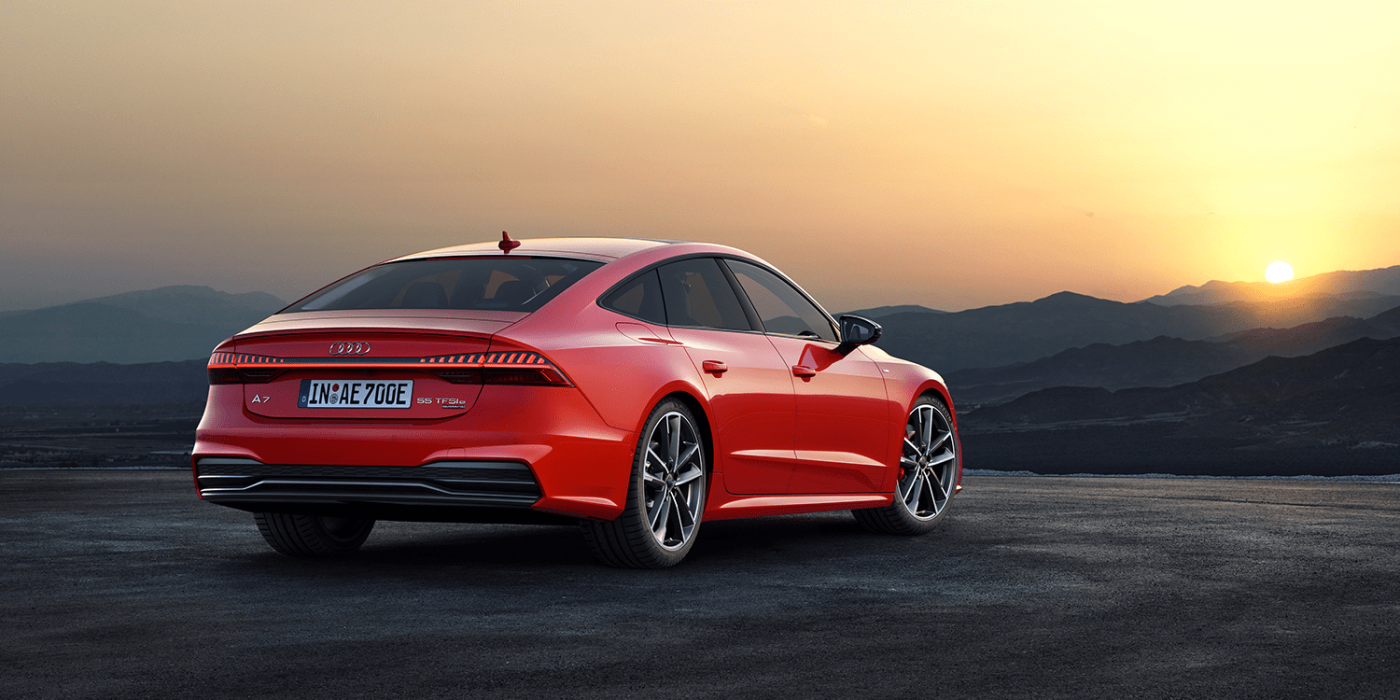
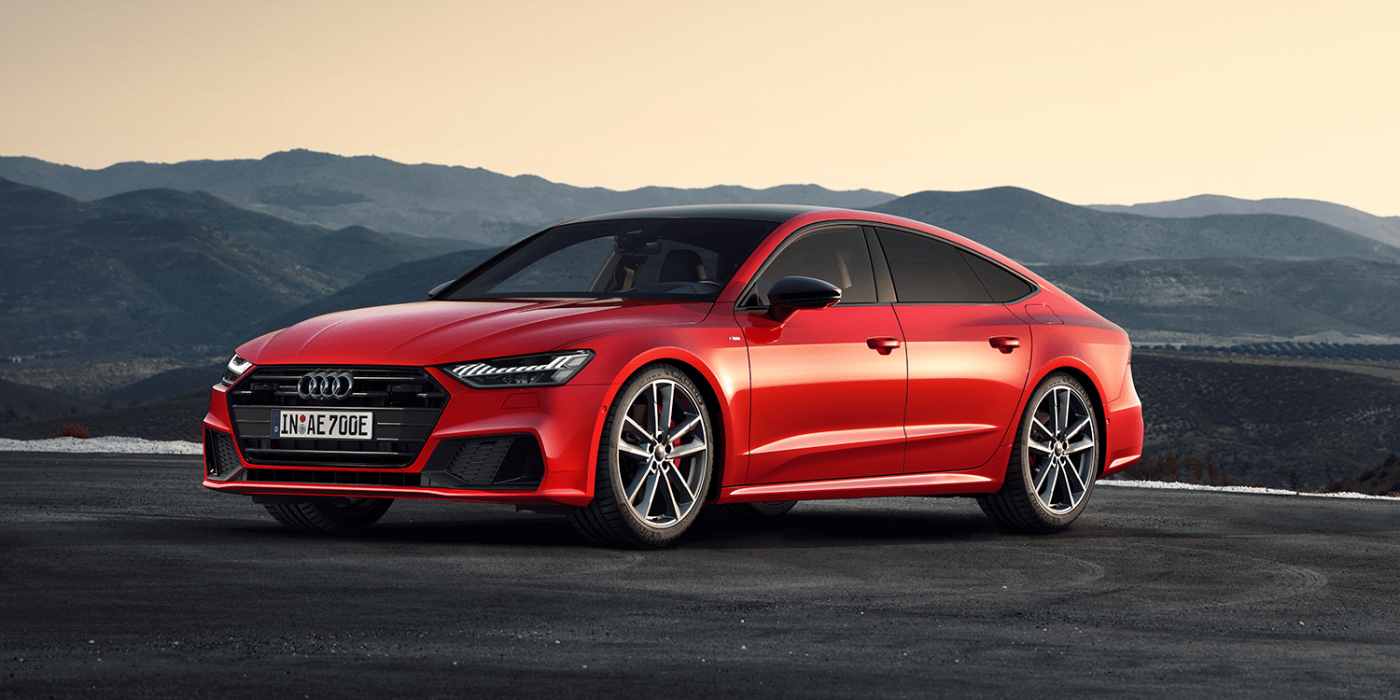
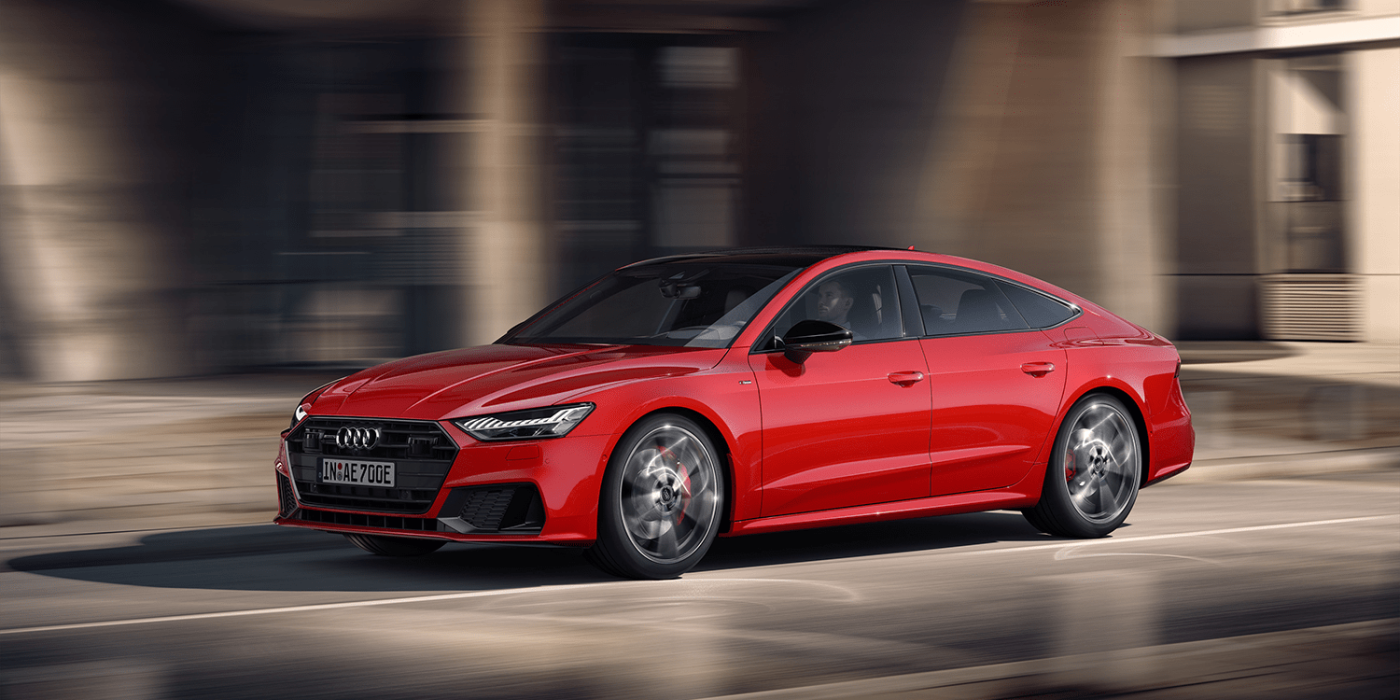
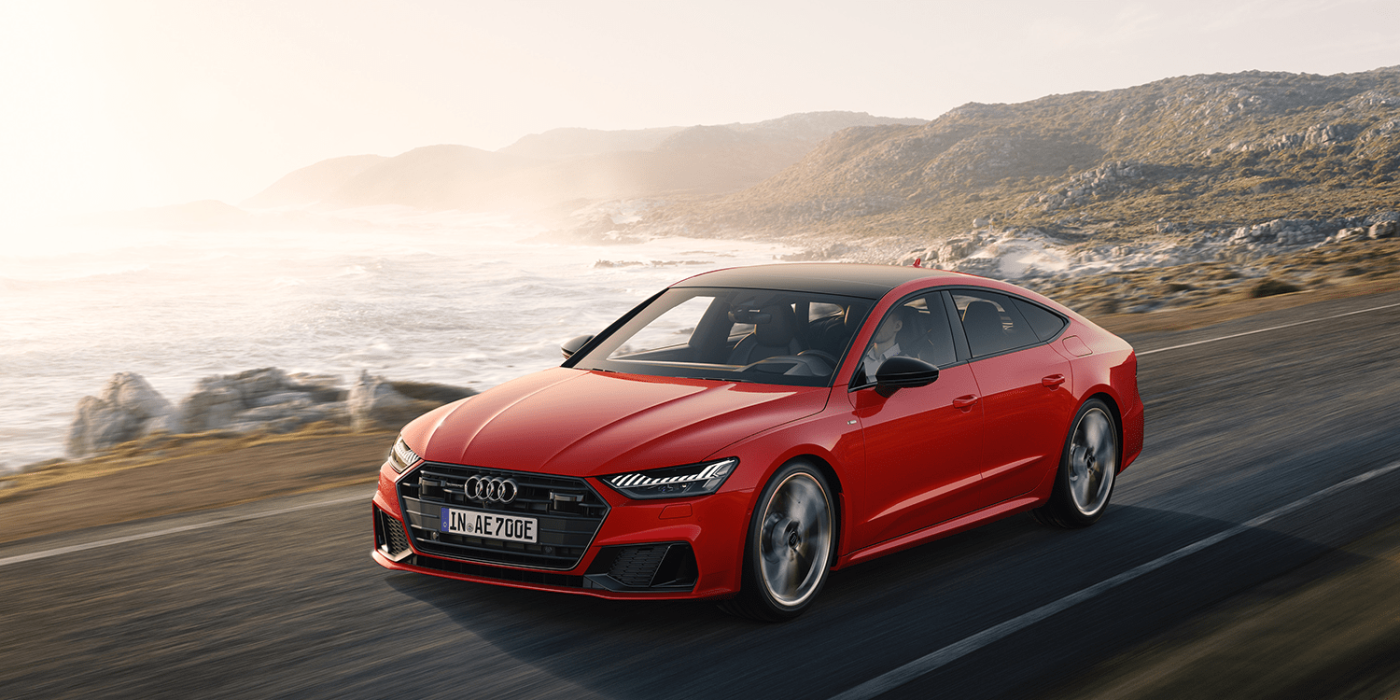
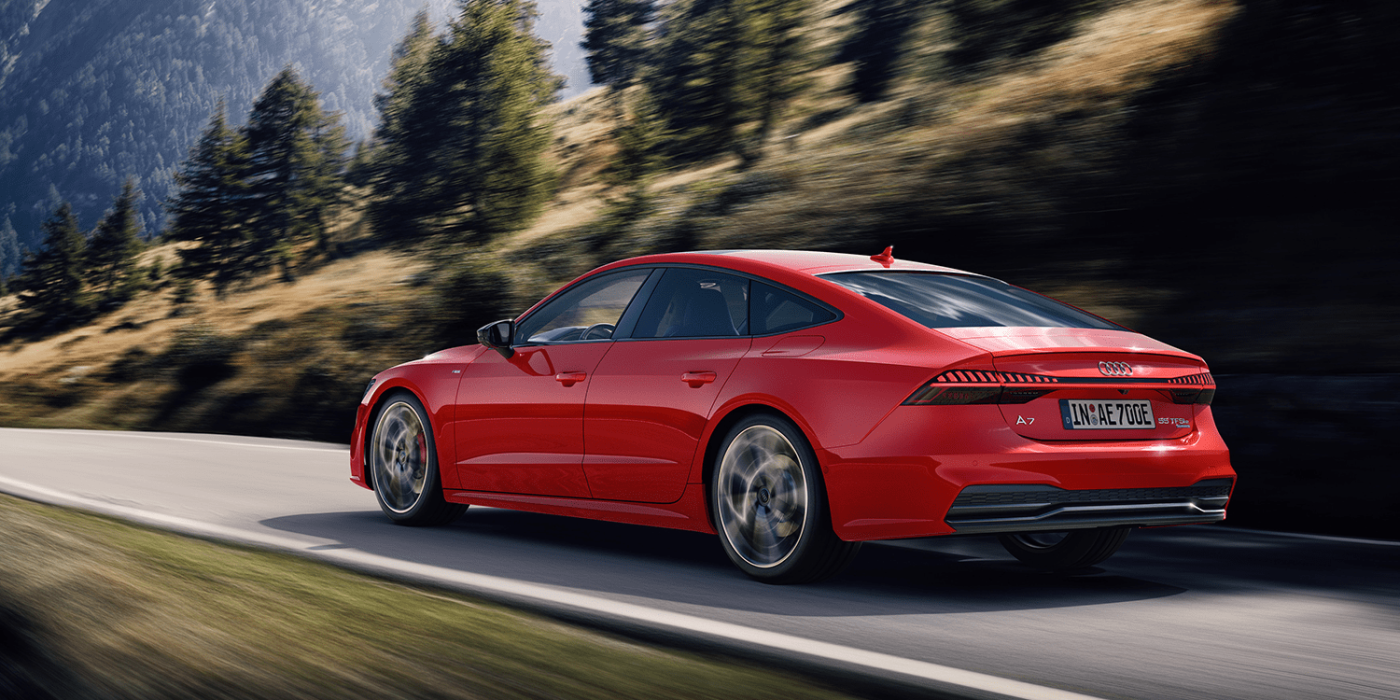
The charging capacity is a maximum of 7.4 kW, which means that the high-voltage accumulator is full again in 2.5 hours at a corresponding charging station or wall box. The charging time at a household socket is seven hours. The A7 Plug-in Hybrid does not have a DC charging option like some Mercedes models.
Audi claims to have designed the motor system so that customers can drive as much electrically as possible. For this reason, the A7 PHEV starts in EV mode as standard. This means that the car is exclusively powered electrically as long as the driver does not exceed a variable, noticeable pressure point in the accelerator pedal. Only then does the car switch to hybrid mode. However, the EV mode is activated again each time the engine is started.
The hybrid mode is activated either automatically with the destination guidance in the navigation or manually by the driver with the operating mode button. In this mode, the A7 PHEV uses the interaction of the electric motor and the combustion engine in such a way that as many driving stages as possible can be covered electrically. In battery hold mode, the battery capacity is kept up to date by the drive management system.
Audi relies on assistance systems in the A7 Sportback 55 TFSI e quattro to increase the electric range and reduce fuel consumption. The “Predictive Operating Strategy” (PBS) plans the use of battery power during active route guidance based on numerous live data so that inner-city routes are driven as electrically as possible. The “Predictive Efficiency Assistant” (PEA), which is already familiar from other Audi mid-range and luxury models, takes care of the detailed planning with which the A7 manages drive control in a current driving situation.
Like other plug-in hybrids, the A7 has a stationary air conditioning system that can be controlled via an app. The air conditioning system also uses a heat pump. Standard equipment includes matrix LED headlights, sports seats, the Virtual Cockpit with PHEV-specific displays and a four-zone automatic climate control system.
Audi’s new PHEV model can now be ordered in Germany at a basic price of 77,850 euros. The market launch begins in the third quarter of 2019. As its electric range in the WLTP cycle is more than 40 kilometres, the plug-in hybrid model can benefit from a reduced tax rate for private use (keyword: 0.5% rule) as a company car in Germany.




0 Comments